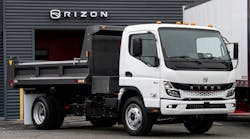Aerodynamics matter. They absolutely matter for sleeper tractors, and hats off to the truck makers because when it comes to tractor aero they know what they are doing. Today’s tractors are sleek designs that slice through the air effortlessly.
But what was learned from our recent Confidence Report on Tractor Aerodynamics is that even day cabs can benefit from aerodynamic devices. Many people think because day cabs do not operate at high speeds nor do they accumulate as many miles as sleepers that it is a waste to invest in aerodynamics on them. But the reality is that aerodynamic devices help at almost any speed.
Fleets tend to keep their day cabs longer than their sleepers so it is important to remember that when buying a day cab you need to look at fuel costs over a longer period of time. Sure fuel prices have been low lately — although they have been creeping up in recent weeks — but will they still be low eight to 10 years from now? Not too likely I suspect.
One thing that complicates the aero picture is that OEM’s products are not interchangeable, so comparing them at the component level is not very meaningful/ OEMs analyze and optimize aerodynamics as a complete system even including the trailer. You need to work with your OEM to understand how their vehicle specs differ from the ones other OEMs have used to optimize their part designs in order to choose the right vehicle for your application.
One of the biggest takeaways from the report was the fact that removing an aerodynamic feature from a truck can lower fuel economy by as much as 10%. That just serves to emphasize the fact that aerodynamics are a system of interrelated components that work together to improve air flow around the truck. Removing one part of the package effects the whole equation.
Whether diesel is selling for $2.50 a gallon or $4.00 a gallon, aerodynamic devices configured as a package considering the combination of the tractor and the trailer will save you money and result in less driver fatigue. And that’s a winning combination.


